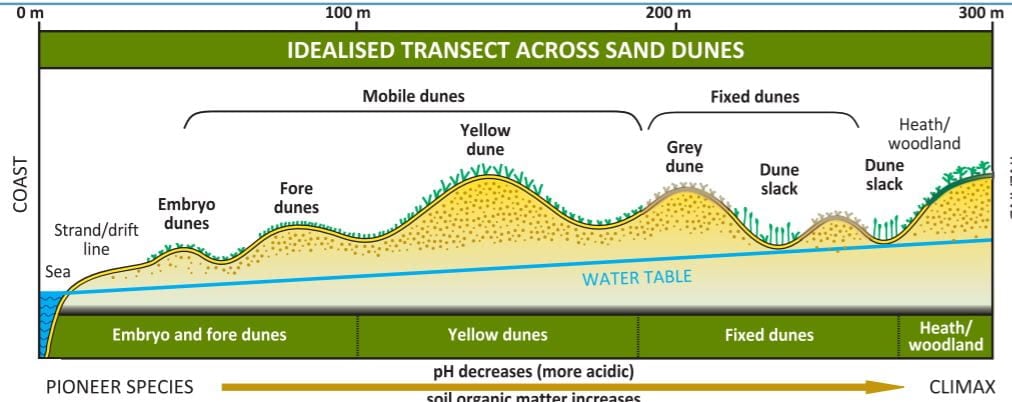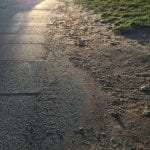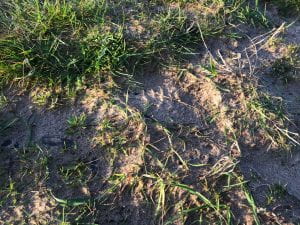Patterns on a plot of land
We’ve been studying patterns and all of a sudden, they are everywhere. It really is about looking through a filter and although I am not very good at it yet, I am definitely noticing more than I did before.

The plot, outlined in red here, is across the road from the beach and is part of a big pattern of sand dunes created many years ago. From the 1880s onwards the land was used as as a links golf course and some of the bunkers can still be seen.
A road then divided the course from the beach and with pavements and play centres built, the dunes became part of the built environment, parts often becoming separated from each other.
But whilst the sand dunes no longer have access to the sea, they are still building and being blown away in minature on the plot of land.

The sand dune that constitutes this plot of land is at the end of the yellow dune and the start of the grey dune phase. It is definitely no longer mobile but the main plant growing on it is grass which is stabilising it.

The first pattern obvious when you move down onto the lower pavement is one of a wave alongside the edge where the sand meets the pavement. Whilst edges are some of the most productive places, this one doesn’t seem to be but I think that is probably because people walk on it because the pavement is not wide enough for groups.
 In order for sand dunes to be made, you need two media, sand and wind, where the wind blows sand, deposits it and then blows it away again. In geographic terms, deposition and erosion. Whilst the dunes behind the beach are quite stable, this piece of land has mini dunes on it. The wind blows the sand which gets trapped by the grass on the land and is then eventually blown off, hitting the wall opposite it and deposited at the base of the wall. The ripples in the sand come from the patterns on the base of trainers rather than anything nature has created. Although hard to see, the pattern is again a wave pattern.
In order for sand dunes to be made, you need two media, sand and wind, where the wind blows sand, deposits it and then blows it away again. In geographic terms, deposition and erosion. Whilst the dunes behind the beach are quite stable, this piece of land has mini dunes on it. The wind blows the sand which gets trapped by the grass on the land and is then eventually blown off, hitting the wall opposite it and deposited at the base of the wall. The ripples in the sand come from the patterns on the base of trainers rather than anything nature has created. Although hard to see, the pattern is again a wave pattern.

Here, the sea beet is moving out from the fence post which offers some protection from the wind in a scatter pattern relating to how the seed has fallen, almost in an explosion pattern.
A book I am reading to gain more knowledge about reading the land is How to Read the Landscape by Patrick Whitefield.